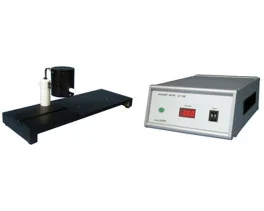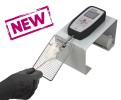Authors
J. J. Luszczki, N. Ratnaraj, P. N. Patsalos, S. J. Czuczwar.
Lab
Medical University, Department of Pathophysiology, and Institute of Agricultural Medicine, Department of Physiopathology, Lublin, Poland.
Journal
European Journal of Pharmacology
Abstract
The aim of this study was to characterize the pharmacodynamic, pharmacokinetic and adverse-effect profiles of vigabatrin and gabapentin. Isobolographic analysis was used in two mouse experimental models of epilepsy: the maximal electroshock seizure threshold test and pentylenetetrazole-induced seizures. In the maximal electroshock seizure threshold test, electroconvulsions were produced by a current with various intensities whilst in the pentylenetetrazole test a CD97 dose (100 mg/kg) was used. Potential adverse-effect profiles of interactions of vigabatrin with gabapentin at three fixed-ratios of 1:3, 1:1 and 3:1 from both seizure tests were evaluated in the chimney (motor performance) and grip-strength (skeletal muscular strength) tests. Vigabatrin and gabapentin total brain concentrations were determined with high performance liquid chromatography. Vigabatrin and gabapentin administered singly increased the electroconvulsive threshold (TID20 — 226.2 and 70.0 mg/kg, respectively). With isobolography, the combination of vigabatrin with gabapentin at the fixed-ratio of 1:3 exerted supra-additive (synergistic) interactions whilst at 1:1 and 3:1 additivity occurred. Similarly, vigabatrin and gabapentin administered singly suppressed the pentylenetetrazole-induced seizures (ED50 values — 622.5 and 201.1 mg/kg, respectively). Isobolography revealed that vigabatrin with gabapentin in combination at the fixed-ratio of 1:1 produced supra-additive (synergistic) interaction whilst at 1:3 and 3:1 additivity occurred. In combination neither motor coordination nor skeletal muscular strength was affected. Total vigabatrin and gabapentin brain concentrations revealed that neither drug affected the pharmacokinetics of the other. Vigabatrin and gabapentin have a favorable pharmacodynamic interaction in animal seizure models in the absence of acute adverse effects or concurrent pharmacokinetic changes.
BIOSEB Instruments Used
Grip strength test (BIO-GS3)
Source : http://www.sciencedirect.com/science/article/pii/S0014299908008066

 Douleur - Allodynie/Hyperalgésie Thermique
Douleur - Allodynie/Hyperalgésie Thermique Douleur - Spontanée - Déficit de Posture
Douleur - Spontanée - Déficit de Posture Douleur - Allodynie/Hyperalgésie Mécanique
Douleur - Allodynie/Hyperalgésie Mécanique Apprentissage/Mémoire - Attention - Addiction
Apprentissage/Mémoire - Attention - Addiction Physiologie & Recherche Respiratoire
Physiologie & Recherche Respiratoire




































 Douleur
Douleur Système Nerveux Central (SNC)
Système Nerveux Central (SNC)  Neurodégénérescence
Neurodégénérescence Système sensoriel
Système sensoriel Système moteur
Système moteur Troubles de l'humeur
Troubles de l'humeur Autres pathologies
Autres pathologies Système musculaire
Système musculaire Articulations
Articulations Métabolisme
Métabolisme Thématiques transversales
Thématiques transversales Congrès & Meetings
Congrès & Meetings 